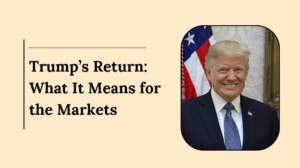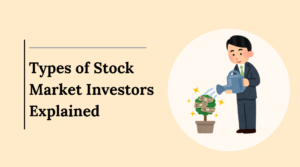When it comes to long-term investments, finding the right ETFs (Exchange-Traded Funds) is crucial. Using ETF screener filters allows investors to narrow down their choices based on specific financial metrics and criteria, making it easier to choose ETFs that align with their long-term goals.
In this article, we will explore some of the best ETF screener filters that long-term investors should consider, how to use them effectively, and the key financial metrics to watch out for.
Also Read: How Does TradingView’s ETF Screener Assist in Selecting Top ETFs?
Key ETF Screener Filters for Long-Term Investors
Here is the Key ETF Screener Filters for Long-Term Investors:
1. Beta
Beta measures the volatility or risk of an ETF compared to the overall market. If an ETF has a beta greater than 1, it means the fund is more volatile than the market. A beta of less than 1 indicates less volatility, which can be appealing for long-term investors looking for stability.
- How to Use Beta: Long-term investors should focus on low-beta ETFs if they aim for reduced risk. On the other hand, if you believe in a bullish market, high-beta ETFs can offer potentially higher returns but with increased risk.
2. % Away From 52W High
The “% Away From 52W High” filter shows how far an ETF’s current price is from its highest point in the past year. This can be useful for understanding if the ETF is currently undervalued or overvalued compared to its past performance.
- How to Use This Filter: Look for ETFs that are far from their 52-week highs but have a strong long-term growth potential. This could indicate a buying opportunity if the fundamentals remain strong.
3. Debt to Equity Ratio
The Debt to Equity (D/E) ratio measures an ETF’s exposure to companies with varying debt levels. A low D/E ratio indicates that the underlying companies in the ETF are not heavily reliant on debt, which reduces financial risk.
- How to Use Debt to Equity: Long-term investors may prefer ETFs with a low debt-to-equity ratio, as these funds tend to include companies with less financial risk and more stability over time.
4. Alpha
Alpha represents the additional return an ETF generates compared to its benchmark. A positive alpha indicates that the ETF has outperformed its benchmark, while a negative alpha means underperformance.
- How to Use Alpha: Focus on ETFs with a consistently high alpha over a long period. These ETFs tend to outperform their benchmarks, making them excellent options for long-term growth.
5. ROCE
ROCE measures how efficiently a company uses its capital to generate profits. An ETF composed of companies with a high ROCE indicates strong operational efficiency.
- How to Use ROCE: Select ETFs with a high average ROCE. This indicates that the companies within the ETF are efficiently using their capital, which bodes well for long-term performance.
6. Daily Volume
The daily volume filter shows how actively traded an ETF is. A higher daily volume suggests better liquidity, making it easier to buy or sell shares of the ETF without affecting its price.
- How to Use Daily Volume: Long-term investors should look for ETFs with a consistent and high daily trading volume. This ensures that liquidity remains strong, especially during market downturns.
7. 5Y CAGR
The 5-Year CAGR measures the average annual growth rate of an ETF’s value over a five-year period. This filter gives a good indication of how consistently an ETF has grown over time.
- How to Use 5Y CAGR: ETFs with a high 5Y CAGR are suitable for long-term investors looking for steady growth. This filter can help identify ETFs that have performed well over the long term.
8. Return on Equity (ROE)
ROE measures how effectively the companies within an ETF generate profits from shareholders’ equity. A higher ROE indicates more efficient management and stronger profitability.
- How to Use ROE: Look for ETFs with high ROE, as these are likely composed of companies that are good at generating returns on investments. For long-term investors, this suggests strong future growth prospects.
9. 5Y Historical Revenue Growth
This filter shows how a company’s revenue has grown over the past five years. It helps long-term investors identify ETFs that include companies with consistent revenue growth.
- How to Use Historical Revenue Growth: Choose ETFs with a high 5Y Historical Revenue Growth rate for long-term stability. Consistent revenue growth usually indicates a healthy and expanding business.
10. Dividend Yield
Dividend Yield measures the income return on an ETF, expressed as a percentage of its market price. High dividend yield ETFs provide consistent income and can be a cornerstone of a long-term investment strategy.
- How to Use Dividend Yield: For long-term investors, dividend yield ETFs offer a regular income stream along with capital appreciation. Look for ETFs with a sustainable and high dividend yield.
How to Use These Filters on ETF Screeners

Here’s a step-by-step guide on how to apply these filters using popular tools like TradingView:
- Step 1: Open the TradingView platform and navigate to the ETF screener.
- Step 2: Select “Create Screen” and choose your filters such as Beta, Debt to Equity, and Dividend Yield.
- Step 3: Search for ETFs based on the selected filters.
- Step 4: Review the filtered ETFs and analyze their long-term performance before making a decision.
With the right ETF screener filters, you can narrow down your options to find ETFs that fit your long-term investment strategy.
Conclusion
Choosing the right ETFs is essential for building a solid long-term portfolio. By leveraging ETF screener filters like Beta, ROCE, Dividend Yield, and Alpha, long-term investors can make well-informed decisions.
Using platforms like TradingView can simplify the process, helping you apply these filters efficiently to find ETFs that meet your criteria for growth, income, and stability.











